WHY THE WOMEN’S MARCH IS JUST BEGINNING
★ ★ ★ ★
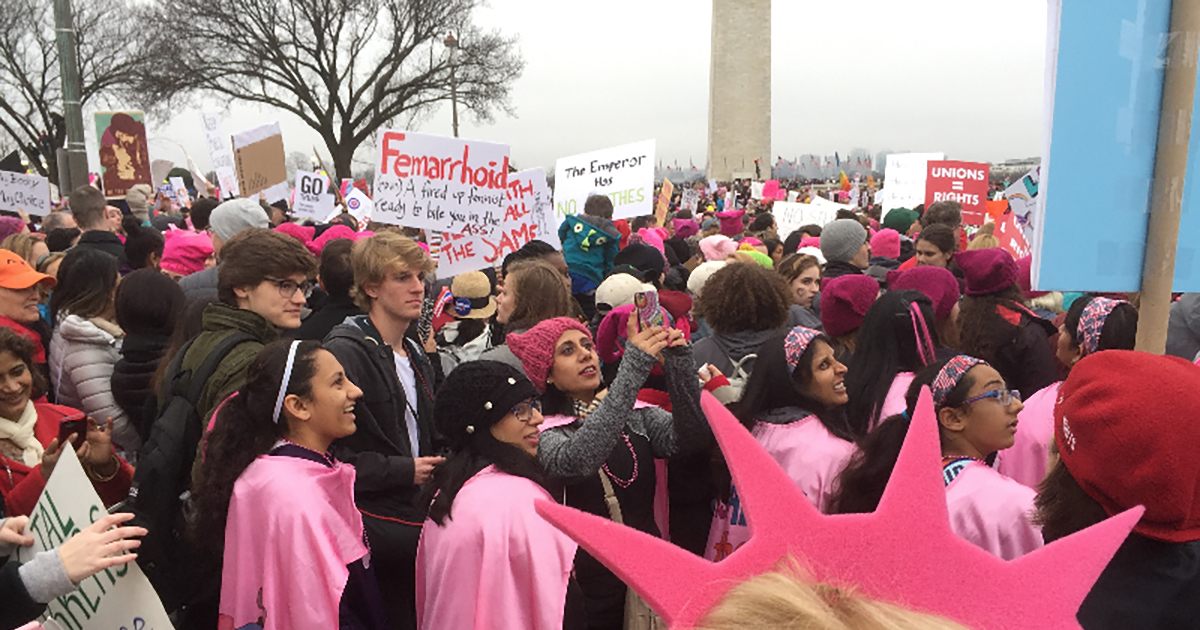
By Maria Behan
It started on the New Jersey Turnpike. Disheartened by the inauguration taking place as we drove down to the Women’s March on Washington, my three friends and I were pretty quiet in the car. Then we spotted a slogan on a van’s rear window: “A Woman’s Place Is in the Resistance.” Our driver pulled up alongside, and I rolled down my window and waved a homemade sign featuring a hammer-and-sickle and the words “Comrade Trump: You’re Fired!” The people in the other car—who had looked a little worried as we pulled up—grinned, waved, and gave the thumbs-up. I flipped my sign around to show the other side, emblazoned with a photo of Donald Trump that captured the fulsome travesty of his hair. The slogan, borrowed from a friend, was “You can’t comb over misogyny.”
(When making that sign, I mused that until recently, I’d used the word “misogyny” so seldom, I always had to look up the spelling. But since Donald Trump descended the Trump Tower escalator taking our country to hell, I know how to spell it.)
It began to feel real at the Delaware House rest stop. Swirls and eddies of pink pussyhats: in the parking lot, in the coffee line, at the sinks in the rest room. Some were knit, a few were fleece. Some fuchsia, others pale baby pink. Embarking on this trip from N.Y. to D.C., we’d wondered if we’d be confronted by hostile, red-capped Trump supporters, but no: The landscape was reassuringly pink and rosy.
The feeling of elation built as we made our way to the demonstration the following morning. The quarter-mile long line for Metro tickets was filled with people in pink hats wielding signs. When the train pulled up, we crammed in. As we arrived at subsequent stations, others crammed in as well. In downtown D.C., the conductor announced that the platform at the stop closest to the march might be too full to let us off. Maybe I was projecting, but he seemed to have a pleased, impish tone in his voice. Our train did make that stop. We were trapped in a crush at the station for about 20 minutes, but everyone took it in stride: taking pictures of the crowd, each other’s signs, and occasionally breaking out in spontaneous waves of cheers—something you seldom hear from people stuck in a line to exit the subway.
The feeling of empowerment reached its zenith when we made it to the area of the rally and march. There were so many people that there was no way to approach, or even see, the stage. Occasionally we’d hear a cheer marking a new arrival on stage, and we’d cheer, too. We didn’t really mind missing the speeches and performances; we’d catch them later on YouTube. The point was being here, being part of history as it was being made. Helping make it ourselves.
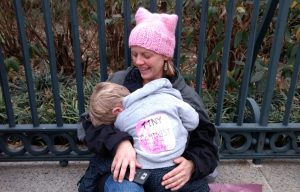
My friends weren’t up for it, so I plunged into the thickest part of the crowd on my own. But I wasn’t alone: I was with several hundred thousand compatriots. You just dove into the crowd and became part of it. You surrendered personal agency and bodily integrity and trusted in the benevolence of others. And it worked.
There were myriad groups, all doing their own thing. I spotted a woman burning sage, presumably to cleanse the air of Trump. Some drummed, others chanted. I enthusiastically joined in my two favorites: “We need a leader, not a creepy tweeter!” and “We’re not going away! Welcome to your first day!”
At one stage, I was caught in a tight throng backed up at an intersection, with a Midwestern-looking gang of teenagers singing folk songs right behind me. To get away from them, I squeezed past a group of older black women who turned out to be from D.C. They were initially a little annoyed at my pushiness in that tight space where nobody was actually going anywhere, but they softened when I explained that I was trying to escape “This Land Is Your Land.”
Later in the afternoon, I reconnected with my friends. We ambled around the Mall, waving our signs and reading others’. Some of the best were “Nyet my President!” “Resisterhood,” “Thy Swamp Runneth Over,” and “We Fucked up Bigly.” An elegant older woman sported a red, Trump-evoking baseball cap emblazoned “WTF America.” A large sign spelled out “Cheetos Never Prosper” in lettering made from actual Cheetos. In reference to our new president’s favorite woman-handle, many slogans played off the march’s unofficial pussy theme: “Viva la Vulva!” “We Are the Revulvalution,” and “No Cuntry for Old Men.”
The Mall setting, with the Capitol Building on one end and the Washington Monument on the other, made us feel energized and patriotic. We were in our country’s capital, which looked majestic—and at least on that day, belonged to us. And as the march’s organizers had hoped, the assembled “us” was inclusive: female, male, and trans; straight and gay; black, white, and brown; old and young.
Our high continued even as the march dispersed. My friends and I were strutting down the street—albeit in a limb-weary, middle-aged way. I wondered if our bubble would burst at our first encounter with a Trump supporter, but for block after block, there was just us, none of them. It felt like we owned the city, and by extension, our country.
The Women’s March on Washington was a life-changing, and potentially, a world-changing event. A way of saying that yes, Donald Trump had his gaudy, ill-attended, and remarkably mean-spirited day on January 20, but the 21st marked the beginning of a huge and committed movement to oppose and eventually depose him. In that sense, the Women’s March isn’t ending any time soon.
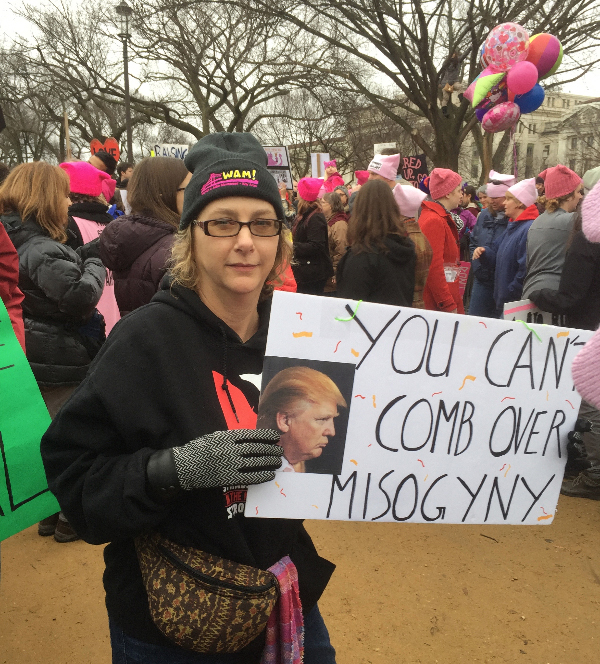
Maria Behan writes fiction and non-fiction. Her work has appeared in publications such as The Stinging Fly, The Irish Times, and Northern California Best Places. She is The Wild Word’s SPOTLIGHT columnist.

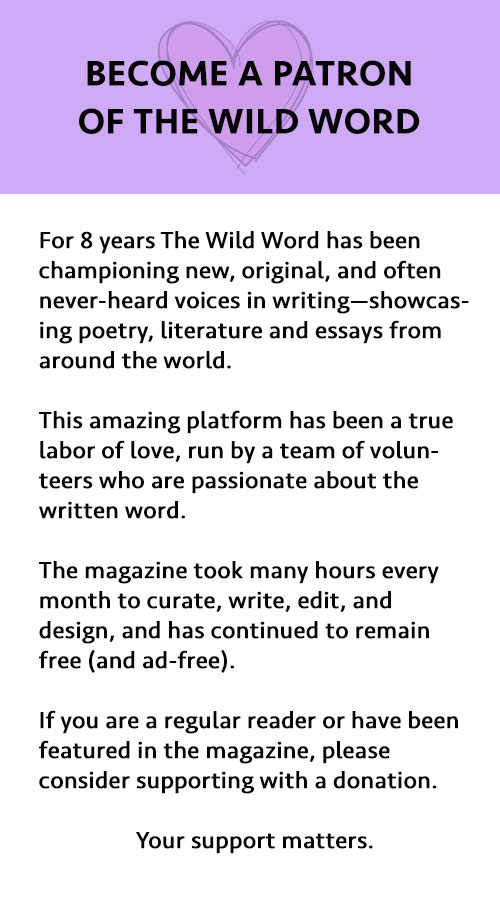







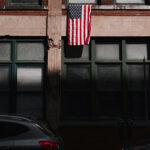














Trackbacks/Pingbacks